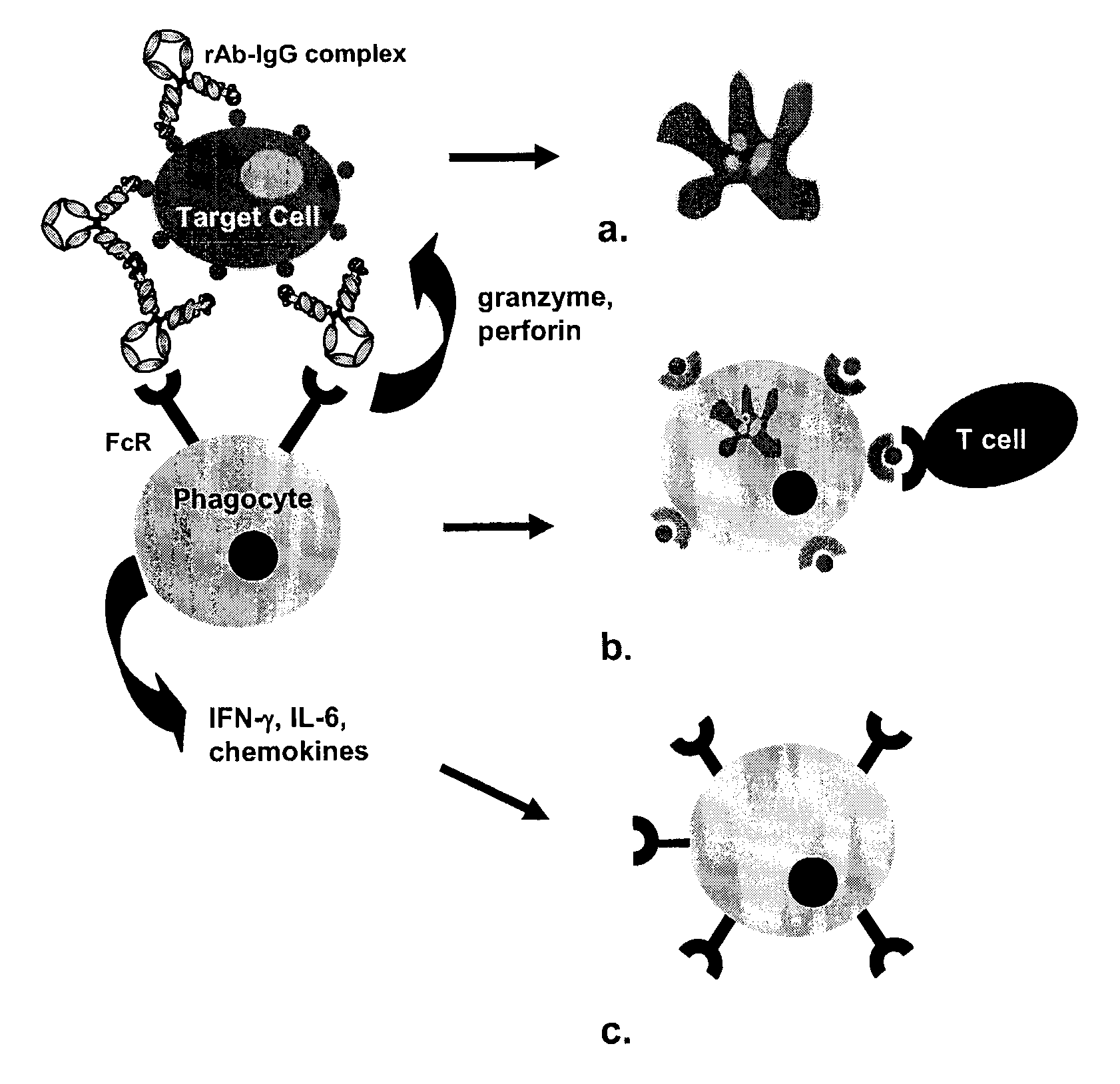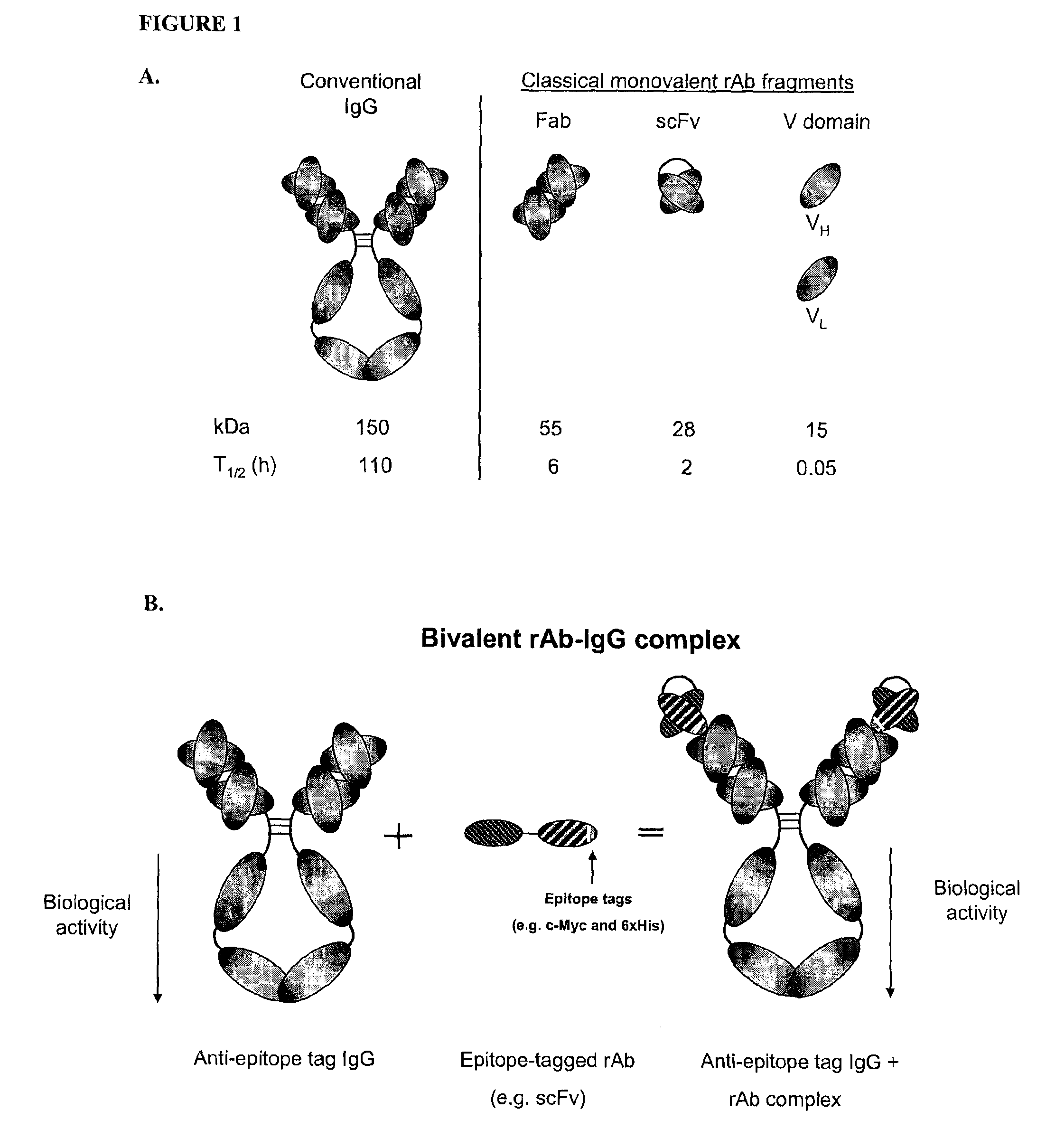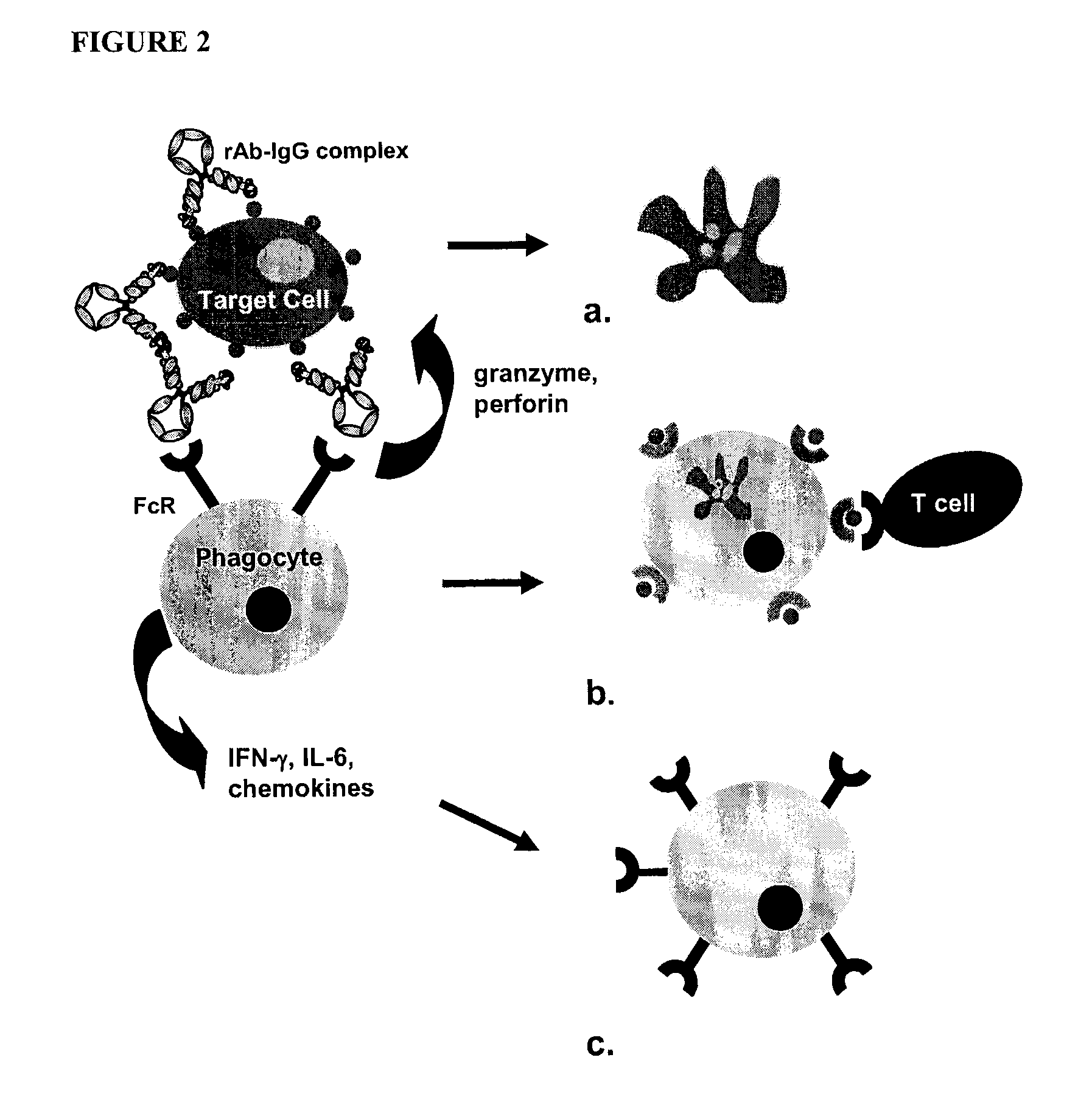Methods of improving the therapeutic efficacy and utility of antibody fragments
a technology of antibody fragments and therapeutic efficacy, applied in the field of methods, can solve the problems of limited therapeutic applications of small rab fragments and the inability to present potential in vivo benefits of using this technology therapeutically, and achieve the effects of improving the therapeutic efficacy and utility of antibody fragments, improving in vivo persistence, and improving therapeutic efficacy and utility
- Summary
- Abstract
- Description
- Claims
- Application Information
AI Technical Summary
Benefits of technology
Problems solved by technology
Method used
Image
Examples
example 1
1.0 Summary
[0116]The present inventors determined that an epitope-tagged antibody (rAb):anti-epitope antibody (mAb) complex increased the rAb circulating in vivo concentration or persistence of the rAb fragment and recruited Fc-mediated effector functions such as phagocytosis (as supplied by Fc-region on the anti-epitope tag mAb) of the antigenic target specified by the rAb. The rAb-anti-epitope tag IgG protein complex has a higher apparent MW, and increased valency and an association with a functional Fc-region when compared to the monovalent rAb fragments (FIG. 2).
[0117]The present inventors used two different specific murine anti-tag IgG1 Abs (i.e. anti-c-Myc and anti-Penta-His) and one non-specific anti-epitope tag IgG1 (i.e. anti-QCRL-1) in combination with a c-Myc and 6×his-tagged murine anti-S. typhimurium scFv (B5-1), to examine in vivo persistence in CD1 mice and FcR-mediated phagocytosis of S. typhimurium by the murine Mφ-like cell line J774. The data demonstrated that biv...
example 2
1.0 Summary
[0149]Recombinant antibody fragments (rAb) are being increasingly exploited as diagnostic reagents and therapeutic drugs. However, their therapeutic applications are often compromised by their short serum half-lives and inability to mediate Fc-dependent effector functions. Here, the efficacy to improve the therapeutic potency of rAbs via the formation of a bivalent rAb-mAb complex through non-covalent binding of an epitope-tagged rAb with an anti-epitope tag mAb was demonstrated. The epitope-tagged rAb provided target specificity, while the anti-epitope tag mAb prolonged rAb serum persistence or half-life and also triggered immune effector functions via its Fc region. This was shown using c-myc- and 6×His-tagged Fab and scFv both directed against Pseudomonas aeruginosa O6ad in combination with two different murine anti-epitope tag IgGs, anti-5×His IgG (Penta-His) and anti-c-myc IgG (9E10), at a molar ratio of 2 to 1 (rAb to mAb). The data showed that complexes with the an...
PUM
| Property | Measurement | Unit |
|---|---|---|
| Ratio | aaaaa | aaaaa |
| Therapeutic | aaaaa | aaaaa |
| Immunogenicity | aaaaa | aaaaa |
Abstract
Description
Claims
Application Information
 Login to View More
Login to View More - R&D
- Intellectual Property
- Life Sciences
- Materials
- Tech Scout
- Unparalleled Data Quality
- Higher Quality Content
- 60% Fewer Hallucinations
Browse by: Latest US Patents, China's latest patents, Technical Efficacy Thesaurus, Application Domain, Technology Topic, Popular Technical Reports.
© 2025 PatSnap. All rights reserved.Legal|Privacy policy|Modern Slavery Act Transparency Statement|Sitemap|About US| Contact US: help@patsnap.com



